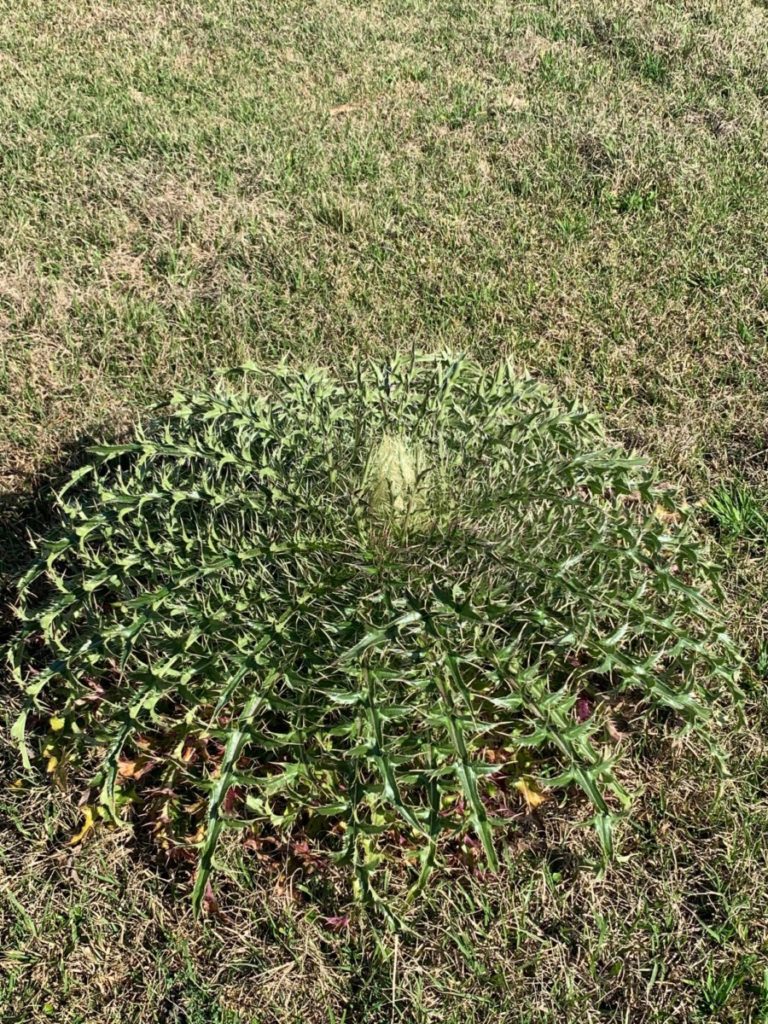Thistles can reduce forage yield and delay spring transition of warm season grasses. Thistles can produce large amounts of seed, sometimes up to 4,000 seed per plant. For growers trying to manage the seed bank, please implement control strategies before flowering.
Several different thistles are found in pastures, which can include Bull thistle (Carduss vulgare), Musk thistle, (Carduss nutans), Yellow thistle, or Horrible thistle (Cirsium horridulum). Thistles have a biennial growth habit, which means it takes two years to complete their growth cycle. In year one, the thistles come up from seed and then bolt and flower in year two. Musk thistles have violet or purple flowers and their flower heads have wide, single spine-tipped bracts that curve upward. The yellow thistle has yellow or reddish-purple flowers and the flower clusters have spine feathery bracts. Yellow thistle stems are covered in fine hairs and hairlike projections. If you need help identifying thistles contact your local county Extension agent.

How do I control thistles in my pasture? Mowing can be used for controlling thistles, but timing is very important. Growers should time their mowing operations when thistles reach the late bolting stage. The stalk is hollow during this stage of development. When the thistle is in bolting stage the stalk elongates from the rosette. It is common for thistles not to bolt at the same time, so growers will probably have to mow several times.
If you are interested in digging up or hand-pulling thistles then try to do this when they are bolting. Please remove as much of the taproot as possible.
Herbicides are often the most effective option for thistle control in pastures. Thistles are most sensitive to herbicide applications during the rosette stage of development. Control options for thistles include 2,4-D, Chaparral, Weedmaster, Grazon P+D, GrazonNext, Surmount, Milestone, Forefront, or Cimarron Max. The stage of development of thistles can influence herbicide selection. For example, 2,4-D is not as effective on flowering thistle compared to GrazonNext. Growers need to refer to the latest edition of the Georgia Pest Management Handbook for the most up-to-date recommendations.